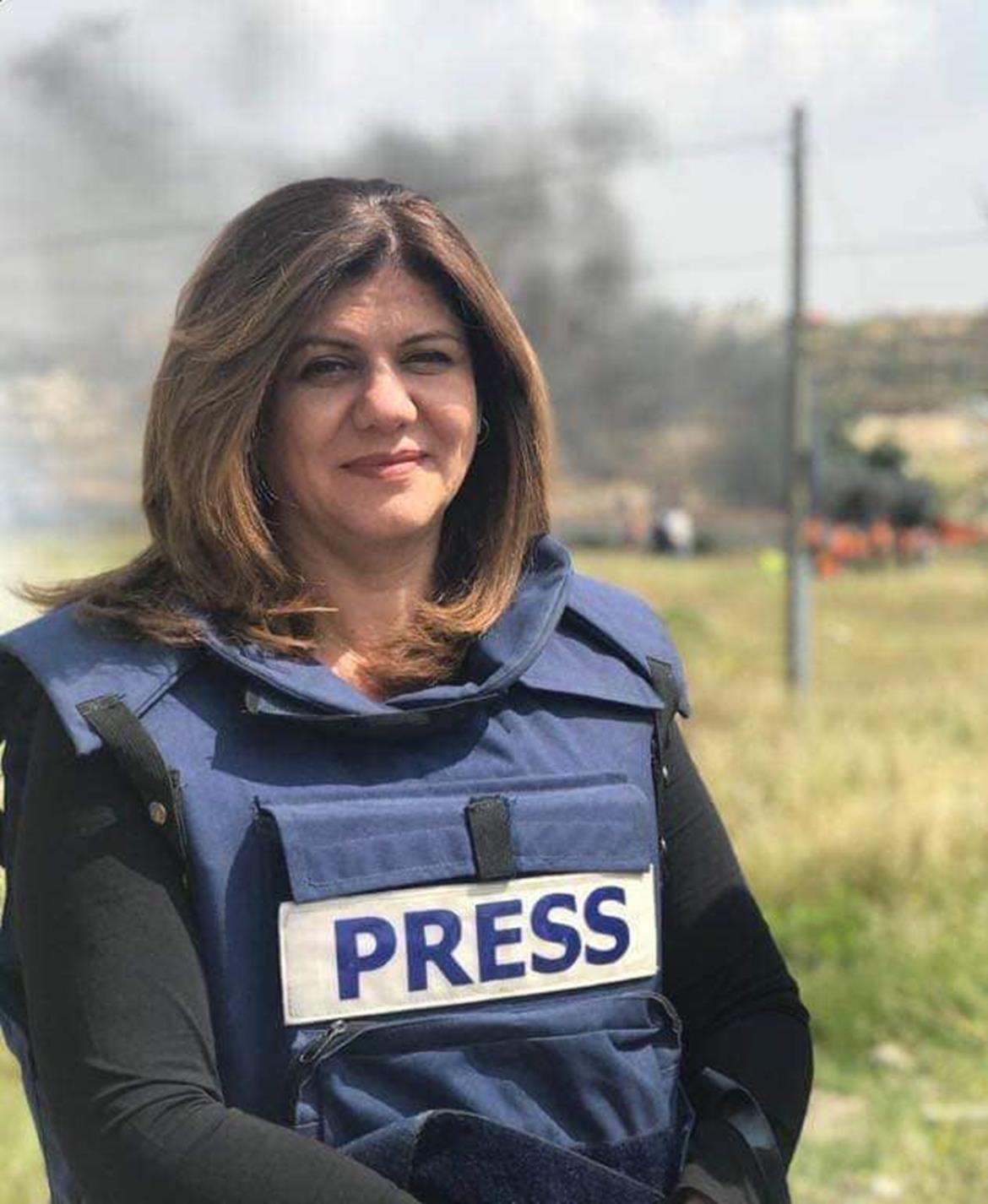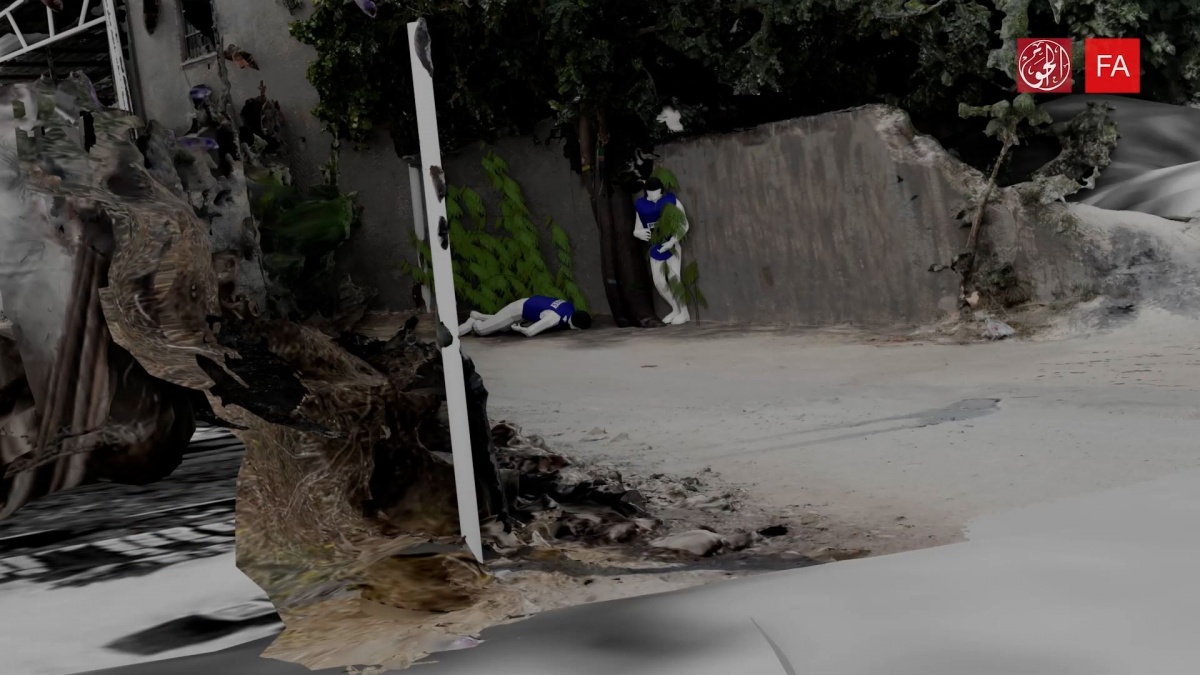In their essay "Investigative Aesthetics" by Fuller and Weizman, the authors describe this practice in detail. Investigative aesthetics, as opposed to traditional investigations that call on experts to impart knowledge and judgment on a situation, are investigations woven together by different media types. They are open-sourced investigations that dig through publicly available media found online such as witness recordings, satellite images, and online databases. These projects do call on experts but focus much more on learning from them very specific things such as the way certain technology functions (ex. Forensic architecture analysis of shootings and expert diagrams of machine guns). Instead of telling the truth or a situation, experts work as a collaborative tool behind individual witness footage and real people.


Right is a still from Forensic Architecture's video on the murder of Abu Akleh (left), a Palestinian Al-Jazeera reporter. The video demonstrates the multidisciplinary approach to presenting evidence. It shows both the raw footage as well as mock-ups. Expert knowledge is applied only to aid and exemplify specific details such as the mechanics of the gun used to shoot her.
The rise of “anti-epistemology” or “post-truth” makes the work of these investigations all the more important. While it is true that images can be manipulated and propaganda is very prevalent, the notion that nothing can be trusted is widely used by racist, nationalist regimes to mark their path to power. The falsification of all media and the thrown-around concept of “fake news” creates a paranoid, conspiracy society and often perpetrates racist and colonizing beliefs.
Investigative aesthetics is multi-disciplinary in its creation, but it is also multidisciplinary in its manifestation. It is not only used in political arenas but more often it is used in artistic and journalistic ones. This creates a strong debate between people in the forensics industry and people in the art industry, neither of which seem to want to claim investigative aesthetics as one of their own.
Looking at evidence as a type of art is something that Italian artist Paolo Cirio does with his work. He calls for evidentiary realism, a category of modern art that combines documentary, forensic, and investigative aesthetics to not just portray social oppression but to examine the structures that produce it.
Instead of just portraying people and situations accurately, evidentiary realism seeks to portray economic, political, legal, and linguistic structures that impact society at large. Realism stems from a demand for justice and truth, but Cirio argues that society needs a deeper and more complex look at the truth. The work of evidentiary realists such as Cirio, goes beyond what classic activist artwork does. It doesn't just point out the individual problem, but it points out the reason for the problem, in turn opening the viewer's eyes to systematic oppression.

Reading about Paolo Cirio's work made me wonder what he would think about activist artists such as Banksy. Evidentiary realism seems to criticize artwork that simply makes people aware of the problem such as this mural of a child soldier. However, I do find that artwork like this is much more accessible to populations that might not know how to read and understand complex and modern evidence/data-based artwork.